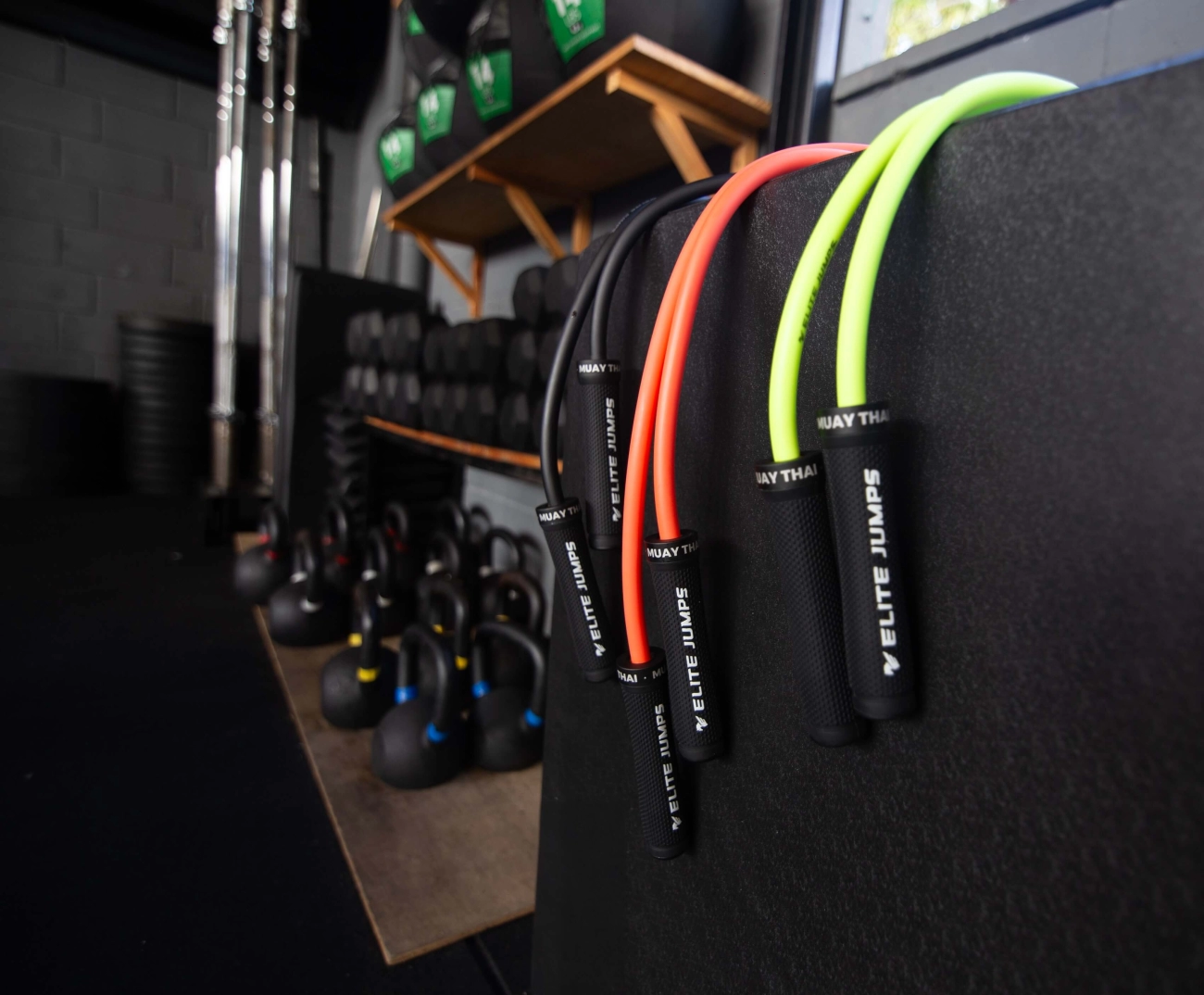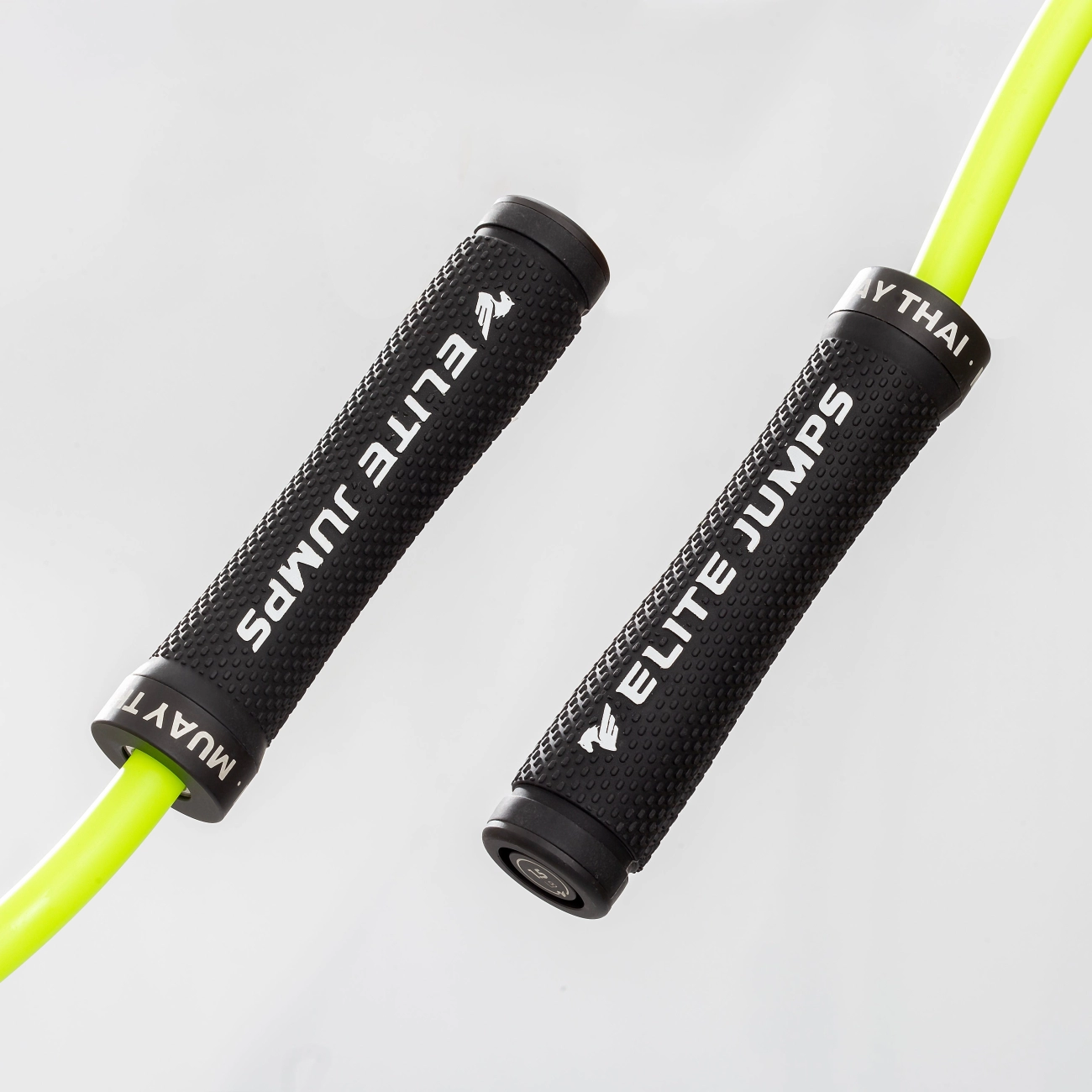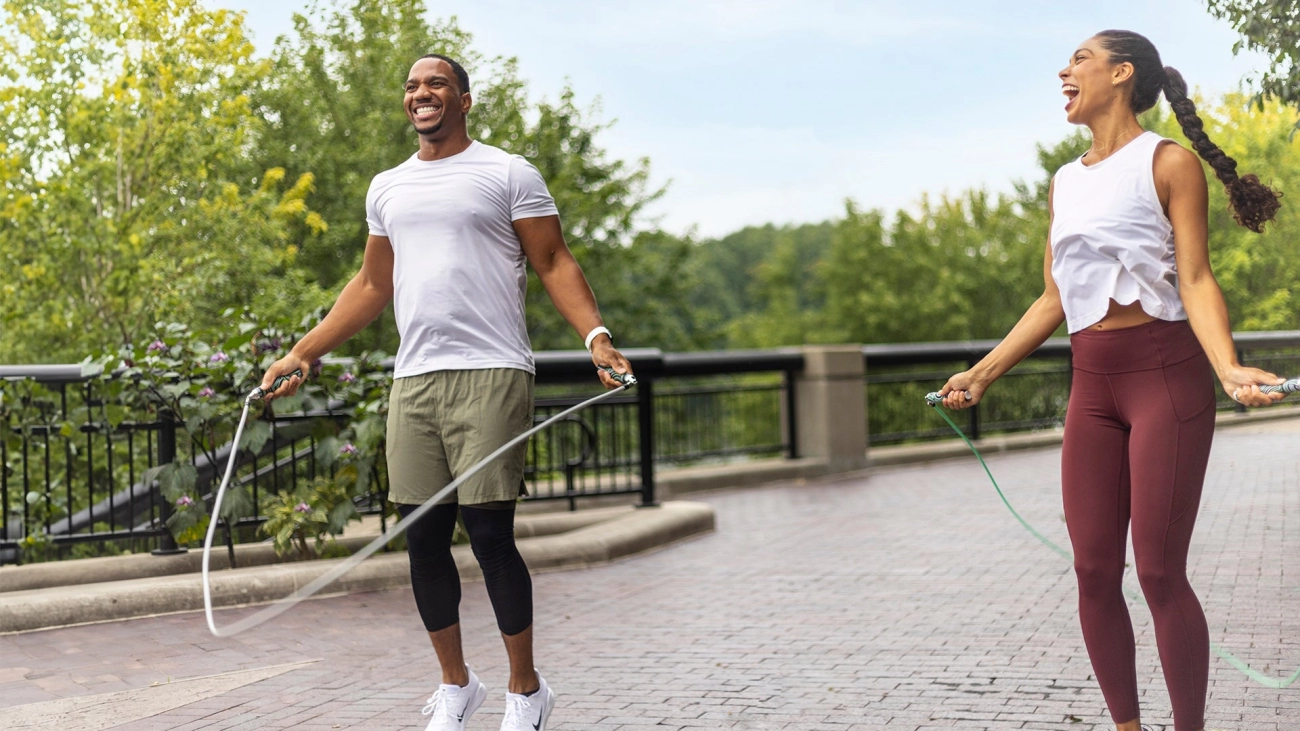Why Skipping Rope Can Be Difficult Initially
Starting to skip rope can feel challenging, and many beginners face common obstacles that make this simple exercise seem harder than it actually is. Understanding these initial difficulties is the first step toward mastering skipping rope techniques for beginners and making your workouts more enjoyable and effective.
Coordination and Timing Issues
One of the biggest hurdles when learning how to skip rope easily is developing the right coordination and timing. Jumping rope requires syncing your wrist movements with your footwork, which isn’t always instinctive at first. If your timing is off, you might trip over the rope or miss jumps, leading to frustration.
- Beginners often try to jump too soon or too late.
- It takes practice to develop rhythm and fluid motion.
- Exercises that focus on pacing and controlled jumps can help build this skill over time.
Choosing Incorrect Rope Length or Type
Using the wrong skipping rope can make the exercise unnecessarily difficult. Your rope length should match your height and skill level, or you might find yourself struggling with tangles or awkward jumps. Additionally, the type of rope—whether it’s PVC, speed rope, weighted, or beaded—affects your ease of use and control.
- A rope that’s too long or too short disrupts your flow.
- Heavy ropes may tire you out faster but can also improve strength.
- Lightweight speed ropes help with quick, smooth rotations but require better coordination.
Lack of Proper Warm-Up and Conditioning
Jumping rope is an intense cardiovascular and coordination exercise. Without a proper warm-up, your muscles and joints may feel stiff, increasing the chance of tripping or fatigue early on. Conditioning your body gradually improves endurance and helps prevent injuries.
- Start with light stretches focusing on calves, ankles, and shoulders.
- Gentle jogging or marching in place prepares your heart and muscles.
- Progressively build your skipping time and intensity to avoid overexertion.
Common Mistakes That Make Skipping Harder
Certain habits can unintentionally make skipping rope tougher than it needs to be, slowing down your progress and causing frustration.
- Jumping too high wastes energy and breaks rhythm. Aim for small, controlled hops just enough for the rope to pass under your feet.
- Poor posture, like slouching or stiff shoulders, can reduce your agility and lead to inefficient movements.
- Holding the rope handles too tightly can restrict wrist movement, making the rope harder to control.
- Landing heavily instead of lightly on the balls of your feet increases fatigue and discomfort.
of Key Points
- Coordination and timing are essential but take time to develop; practice rhythm-building exercises.
- Choose the right rope length and type based on your height and skill level.
- Always warm up properly to condition your body for skipping rope workouts.
- Avoid common mistakes like jumping too high and poor posture to maintain smooth, easy skipping.
By understanding and addressing these challenges, you set the foundation for an enjoyable and effective skipping rope routine. Keep these tips in mind as you start your journey to easy skipping rope exercises and improved fitness.
How to Choose the Right Skipping Rope for Ease and Efficiency

Picking the right skipping rope makes a huge difference when you’re starting out. The right rope helps you avoid frustration, improve coordination, and get the most out of each jump. Here’s how you can choose and adjust a rope designed for easy skipping and lasting use.
Rope Length Guide for Beginners with Personalization Tips
Start by finding the right rope length. A rope that’s too long or too short can throw off your rhythm and make skipping harder. Here’s a simple method:
- Stand on the middle of the rope with one foot.
- Pull the handles up alongside your body.
- For beginners, the handles should reach roughly to your armpits. If they go higher, the rope is too long; if lower, it’s too short.
- You can customize the length by trimming the rope or adjusting the handle if your rope allows it.
For a detailed option, check out this 9 Foot Skipping Rope that offers easy length adjustment, ideal for beginners.
Types of Skipping Ropes and Their Impact on Ease of Use
Different rope types serve different purposes and skill levels. Knowing what suits you best can make skipping a breeze:
- PVC Jump Ropes: Lightweight, affordable, and great for beginners. They offer smooth swings without much effort.
- Speed Ropes: Thin and fast, usually made with steel cables coated in nylon or PVC. These are best once you’ve got timing down and want to increase your speed.
- Weighted Ropes: Add resistance to your workout; they’re heavier and improve arm strength but are harder for beginners.
- Beaded Ropes: Durable and visually easy to track, making them perfect for learning rhythm and timing, especially for kids or outdoor use.
JumpRopeWholesale offers a variety of these, like the durable PVC Rope and smooth Ball Bearing Skipping Rope designed specifically with ease of use and durability in mind.
Why JumpRopeWholesale Ropes Are Designed for Ease and Durability
As a leading skipping rope manufacturer, JumpRopeWholesale focuses on ropes that help beginners skip easily right from the start:
- Smooth rotation with ball bearing mechanisms reduces wrist strain.
- Tangle-resistant designs keep your workout flowing without interruptions.
- Durable materials stand up to daily use and different workout styles.
- Handles that fit comfortably in your hands to maintain good grip and control.
These features ensure your skipping rope is efficient and lasts longer, helping you stay motivated and focused on progress.
How to Adjust Your Rope for a Perfect Fit
A personalized fit is key for comfort and performance. Follow these quick steps:
- Stand on the midpoint of your rope.
- Pull the handles up to your desired length (usually armpits for beginners).
- Most JumpRopeWholesale ropes allow you to loosen a clip or screw inside the handle to slide the rope through and cut the extra length.
- Make sure the cut ends are safely secured to avoid unraveling during use.
If you prefer ready-to-go options, consider the easy-to-adjust RPM Skipping Rope built for quick setup.
Choosing the right rope is your first step toward skipping rope easily. Focus on length, type, and quality to build confidence and enjoy your workouts more. For more guidance or to explore ropes that fit your style, you can always contact JumpRopeWholesale directly.
Step-by-Step Beginner Techniques to Make Skipping Easy

Skipping rope can seem tricky at first, but mastering a few simple techniques will make it easier and more enjoyable. These beginner skipping rope tips focus on fundamentals like foot placement, timing, wrist movement, and gradually building your skills.
Basic Jump with Proper Foot Placement and Timing
- Stay light on your feet. Land softly on the balls of your feet, not flat-footed or on your heels. This reduces impact and helps you stay balanced.
- Jump just high enough to clear the rope. Aim for 1-2 inches off the ground—jumping too high wastes energy and breaks your rhythm.
- Keep your knees slightly bent to absorb shock and prepare for the next jump.
- Find a steady pace. Timing is everything; jump with the rope’s swing so the rope passes under your feet smoothly.
Wrist Rotation for Smooth Skipping
- Use your wrists, not your arms. Your wrists should do most of the work turning the rope in small, controlled circles.
- Keep your elbows close to your sides to avoid unnecessary upper arm movement.
- Practice wrist motion separately by mimicking rope rotation without an actual rope—this improves coordination.
Start Slow with Short Sets and Progress Gradually
- Begin with short intervals. Try 15 to 30 seconds of jumping followed by rest.
- Repeat in sets with plenty of breaks to avoid fatigue and frustration.
- Increase your skipping time step by step as your coordination and endurance improve.
- Focus on accuracy over speed in the beginning—getting the rhythm right is more important than jumping fast.
Exercises to Improve Coordination and Rhythm
- Count your jumps out loud or in your head to sync your timing.
- Practice “two-foot bounce,” jumping with both feet together at a consistent rhythm.
- Add side-to-side or forward-backward foot movements once you feel comfortable to challenge coordination.
- Use a metronome app or music with a steady beat to develop a natural skipping rhythm.
By applying these beginner skipping rope techniques and exercises, you’ll build a solid foundation. This approach helps you skip rope easily without frustration, setting you up for more advanced workouts and better fitness results.
Tips and Exercises to Improve Skipping Speed and Endurance

Improving your skipping rope speed and endurance is key to getting the most from your workouts. By focusing on warm-ups, interval training, and cross-training, you’ll build better rhythm, stamina, and overall coordination. Here’s how to make your jump rope sessions more effective and enjoyable.
Warm-up Exercises Specifically for Jump Rope
Starting with a proper warm-up prepares your body and reduces injury risk. Before jumping rope:
- Leg swings and hip circles to loosen your joints.
- Ankle rotations for better foot movement.
- Light jogging or marching in place for 3–5 minutes to raise your heart rate.
- Do basic skipping at a slow pace for 1–2 minutes to get your muscles ready.
A good warm-up improves blood flow and helps your coordination, making it easier to skip rope smoothly.
Interval Training to Build Rhythm and Stamina
Interval training is one of the fastest ways to boost your skipping rope speed and endurance. Here’s a beginner-friendly approach:
- Start with 30 seconds of fast skipping, followed by 30 seconds of rest or slow jumping.
- Repeat for 5 to 10 rounds depending on your fitness level.
- Gradually increase the work period or reduce rest time as your stamina improves.
- Incorporate variations like high knees or double unders to challenge your coordination and rhythm.
This method conditions your heart and muscles to sustain higher intensity, making longer skipping sessions easier.
Cross-Training Exercises for Strength and Coordination
To improve skipping rope endurance, don’t rely on rope work alone. Adding these exercises will build the strength and coordination needed:
- Bodyweight squats and lunges for leg power and stability.
- Planks and core exercises to maintain posture during skipping.
- Wrist and forearm stretches to reduce fatigue from rope rotation.
- Balance drills, like single-leg stands, to enhance coordination between your body and rope.
Cross-training ensures your body can handle longer skipping workouts while reducing injury risk. It also helps with timing, a common challenge for beginners.
By incorporating warm-up exercises, interval training, and targeted cross-training, you’ll see noticeable improvements in your skipping rope speed and endurance. Stick with these tips and your jump rope workouts will feel easier, more efficient, and a lot more fun.
Troubleshooting Common Skipping Rope Problems for Easy Skipping

Skipping rope is simple, but beginners often run into common issues that can slow progress or cause frustration. Let’s break down how to fix the main problems so you can keep moving forward with ease.
Preventing Rope Tangling and Solutions
Tangling is one of the most annoying skipping rope problems. It usually happens because of:
- Improper rope storage: Throwing your rope in a bag or on the floor causes kinks and tangles.
- Excess rope length: If the rope is too long, it’s more likely to twist and knot.
- Incorrect skipping technique: Rope catching on your toes or uneven wrist rotation can cause twisting.
How to prevent tangling:
- Store your rope properly by coiling it loosely and hanging it or using a rope bag.
- Adjust rope length to your height before each session.
- Make sure your wrist rotates evenly and the rope swings smoothly in a circle.
- Use beaded ropes or weighted alternatives, which tend to tangle less.
If you do get a tangle, unravel knots by gently loosening loops—don’t pull hard, as this can damage the rope.
Fixing Rope Hitting Feet or Thighs with Causes and Remedies
Hitting your feet or thighs means your timing or form needs tweaking. Causes include:
- Jumping too early or late relative to the rope swing.
- Jumping too high, which throws off rhythm.
- Rope length not matching your height.
- Using your arms instead of wrists to turn the rope.
How to fix this:
- Try to jump just enough to clear the rope – about an inch off the ground.
- Practice wrist rotation, not arm movement, to keep rope swinging smooth.
- Check your rope length again; step on the center and pull handles up. They should reach your armpits.
- Slow down your pace until you can time jumps cleanly, then increase speed.
Overcoming Fatigue and Motivation Lapses
Skipping rope can be tough on the body and mind, especially when starting out. Fatigue and loss of motivation are common barriers.
Here’s how to overcome them:
- Start with short sessions: 1-2 minutes at a time and gradually build up.
- Use interval training: alternate between jumping and rest to reduce exhaustion.
- Focus on consistency over intensity to keep habit going.
- Set small, achievable goals like increasing reps or time each week.
- Mix skipping rope with other activities to avoid boredom.
- Track your progress so you can see improvements, which boosts motivation.
By addressing these common problems head-on, skipping rope becomes easier and more enjoyable. Consistent practice paired with the right rope and techniques will help you build rhythm, coordination, and stamina without frustration.
Incorporating Skipping Rope into Your Fitness Routine for Sustainable Progress
Adding skipping rope to your workout plan is one of the smartest moves you can make for overall fitness. It’s simple, effective, and fits well whether you’re short on time or want to ramp up your cardio game. Here’s how to make it a sustainable part of your routine so you keep improving without burnout.
Beginner Friendly Skipping Rope Workout Plans
Starting with the right workout plan helps you build confidence and skills without getting overwhelmed. Here’s a basic beginner skipping rope workout you can try:
- Warm-up: 3-5 minutes of light jogging or dynamic stretching
- Basic jump sets: Jump rope for 30 seconds, rest for 30 seconds – repeat 5 times
- Wrist and foot coordination drills: Practice slow, small jumps focusing on rhythm for 3 minutes
- Cool down: Light stretching focusing on calves, ankles, and shoulders
This plan helps build your stamina and coordination steadily. As you get better, gradually increase jump time and reduce rest intervals.
How Often to Practice for Best Results
Consistency is key for progress. Here’s a simple guideline:
- 3 to 5 times per week for beginners to build endurance and coordination
- Start with 10-15 minutes per session and increase as your fitness improves
- Include at least 1-2 rest days each week to avoid fatigue and injury
Remember, skipping rope is high-impact for your legs and joints, so listen to your body and modify sessions if you feel strained.
Combining Skipping Rope with Other Workouts
Skipping rope plays well with almost any fitness routine and can amplify your results whether you’re focusing on cardio, strength, or fat loss.
- Add skipping to your warm-up: 5 minutes of jump rope can activate muscles and raise heart rate for weight training or sports.
- Use skipping in circuit training: Combine jump rope intervals with bodyweight exercises like push-ups, squats, or lunges.
- Include skipping for cardio days: Swap running or cycling with jump rope to keep your workouts fresh and challenging.
- Cross-training benefits: Skipping improves balance, coordination, and aerobic capacity, enhancing performance in other sports or activities.
The key is to build skipping rope sessions that complement your goals without causing overtraining.
By making skipping rope a regular, well-structured part of your fitness routine, you set yourself up for sustainable progress, better coordination, and faster results. Stick to consistent practice, adjust your workouts as you improve, and combine skipping rope with other exercises to enjoy a balanced, effective workout plan.
Why Choose JumpRopeWholesale for Your Easy Skipping Journey
When it comes to making skipping rope easy and enjoyable, JumpRopeWholesale stands out as a reliable choice for both beginners and experienced jumpers. As a leading skipping rope manufacturer, they focus on offering products that deliver quality, durability, and user-friendly designs tailored to match your skill level.
Wide Range of Skipping Ropes for Beginners and Pros
JumpRopeWholesale’s selection includes:
- Beginner Skipping Ropes: Lightweight, adjustable length, and materials like PVC or beaded ropes that help you get the rhythm without hassle.
- Speed and Weighted Ropes: For those looking to enhance their workout intensity and build endurance efficiently.
- Durable Materials: Ropes made with tough PVC or strong beaded designs ensure long-lasting use without frays or breaks.
- Customizable Options: Ability to choose rope length and handle style for perfect fit and comfort.
This variety means you can easily find the best skipping rope for beginners or advance to pro-level ropes as your skills grow.
Customer Success Stories and Trust
Many users across the US have shared how JumpRopeWholesale ropes helped them improve coordination, stamina, and skipping speed. Here’s what some have said:
- “Started with their beginner rope, and it made learning so much easier with zero tangling.”
- “The weighted rope gave me a tough workout while staying smooth and easy to control.”
These testimonials reflect the brand’s commitment to supporting your skipping rope journey from day one.
Where to Buy and How to Get the Best Deals
You can purchase JumpRopeWholesale products directly through their official website. They offer:
- Competitive pricing with bulk discounts, great for individuals or trainers buying multiple ropes.
- Fast shipping across the United States to get you skipping quickly.
- Customer support to help with product choices or rope adjustments.
For the best deals, check their online sales sections or sign up for newsletters featuring promotional offers.
Choosing JumpRopeWholesale means investing in quality skipping ropes designed to make skipping rope easy, effective, and fun for everyone. Whether you’re just starting or looking to improve your skills, their range supports your progress every jump of the way.



